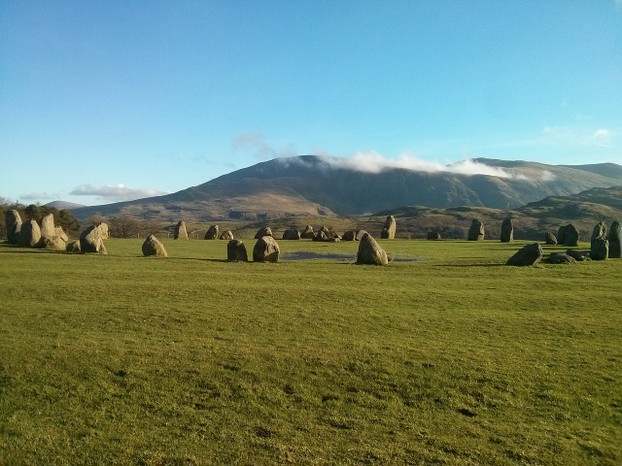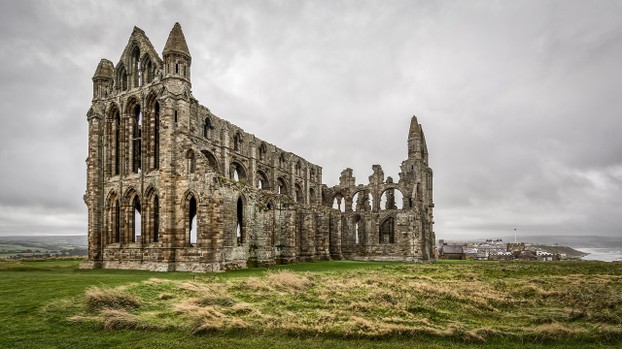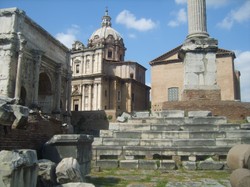I had what I now know to be a panic attack when I was eight years old. We were holidaying in North Wales and were taking a picnic at the ruined Rhuddlan Castle, whose mighty mediaeval stone keep had seen many a year and much turmoil. Mother was pregnant and just wanted to sit, Dad sat beside her on the grass by the empty moat, and Veronica was in her trolley, which left room for me and my brother to race madly round the walls. I knew about castles, knights and men at arms, for I had seen pictures of them in books,and so I ran not just with my body, but with my imagination. Taking a cut through the ancient keep, in which I was the only living person. I was suddenly struck with terror. I imagined that I was being watched, that hundreds of eyes were staring down at me from the walls, I imagined men at arms gazing down from the ruined ramparts. For a moment I stood transfixed and then fled out to the safety of my parents.
I can still remember clearly the moment of terror fifty nine years ago, and can find a parallel in Seamus Heaney's poem, Death of a Naturalist when at six he realized the terror that lurks in nature. I attribute the panic attack to the fact that I was growing up and becoming aware of the vastness of time and of the eons that have gone before me, peopled by folk that I can never know. Being a small child on his own surrounded by massive, ancient walls caused a surge of fear generated by a sense of vulnerability.
Never since have I had such a panic attack in ruins. Some of them, like the Roman Forum or Pompeii are so busy that you don't have the solitude needed for imaginative engagement.But when you visit some ruins you have time to pause and reflect. I have on more than one occasion visited the ruined monastery on Llandwn Island off Anglesey, a tidal isle that can be accessed on foot. Standing in the ruined church which is now filled with nettles and looking up through the vanished roof to the sky above I cannot be anything else but sad for what has been lost, for how much that was good that disappeared at the Reformation.
The poet in me [we all have some poetry in us] allied with the gardener when I saw the nettles, for I know that they only grow in fertile soil. So maybe,I mused, the monastery is still fertile for us today, preserving some of the spirituality of the place for us to savour in our age for a brief moment, sparkles from the light of a receding past,a reminder that the modern age has its serious deficiencies.









 The North Wales Pilgrim Pathon 03/30/2024
The North Wales Pilgrim Pathon 03/30/2024
 Rewilding the Isle of the Thundergodon 02/17/2024
Rewilding the Isle of the Thundergodon 02/17/2024
 Adrienne von Speyr a life on the edge of heavenon 01/24/2024
Adrienne von Speyr a life on the edge of heavenon 01/24/2024
 The Granite Kingdom: a Cornish Journeyon 12/29/2023
The Granite Kingdom: a Cornish Journeyon 12/29/2023



Comments
No human knows the answer to these questions. Only God knows.
Thank you for your comment below in answer to my previous, same-day observations and question!
That comment and the third comment down respectively consider demons as "rogue angels" and Satan as "an archangel who went wrong."
Do the above-mentioned Hell-dwellers stay that way forever or will they be joined by more archangels gone wrong or rogue angels or will these rogue angels and archangels vanish?
The demons are rogue angels, so it is thought, so lack human souls. We do not know much about the damned, whether there is any hope for them.
Thank you for your comment below in answer to my previous, same-day observations and questions.
It intrigues me how the Church interpreted Dame Julian of Norwich (Nov. 8, 1342-1416?) in her lifetime and from her lifetime onward to now.
If Hell-living Satan lacks an archangelic equivalent of a human soul, then his Hell-living angelic and archangelic followers each lack one too, correct?
So might Hell lose its bedeviled human souls even as it maintains its soul-less leader and his Satan-mustered soul-less followers?
Satan was never a human being, but an archangel who went wrong. He therefore never had a human soul.
Thank you for your comment below in answer to my previous observations and question.
The empty-Hell showing to Dame Julian of Norwich (Nov. 8, 1342-1416?) appears to assist all souls toward their salvation.
But does everyone have souls?
Might it be possible for someone such as Satan either never to have been soul-full or to have destroyed or extirpated or lost or transformed it?
The church has always stated that Hell is forever, but Dame Julian of Norwich had a vision, which she called a showing, which showed Hell to be empty. She said that the Trinity will perform a work yet to be imagined in which all souls are saved.
There's the unfortunate saying of the poor always being with us.
Might the same be said about Satan and his Hell? Or might there be something to terminate or transform him and it?
He does notnseem to have anything to be happy about.
Thank you!
Hell is ruled by Satan. It is not a place where a human is happy, correct?
But what is the thought about Satan? Is he not happy there either?